Intel Optane SSD DC P4800X 750GB Hands-On Review
by Billy Tallis on November 9, 2017 12:00 PM ESTSingle-Threaded Performance
This next batch of tests measures how much performance can be driven by a single thread performing asynchronous I/O to produce queue depths ranging from 1 to 64. With these fast SSDs, the CPU can become the bottleneck at high queue depths and clock speed can have a major impact on IOPS.
4kB Random Reads
With a single thread issuing asynchronous requests, all of the SSDs top out around 1.2GB/s for random reads. What separates them is how high a queue depth is necessary to reach this level of performance, and what their latency is when they first reach saturation.
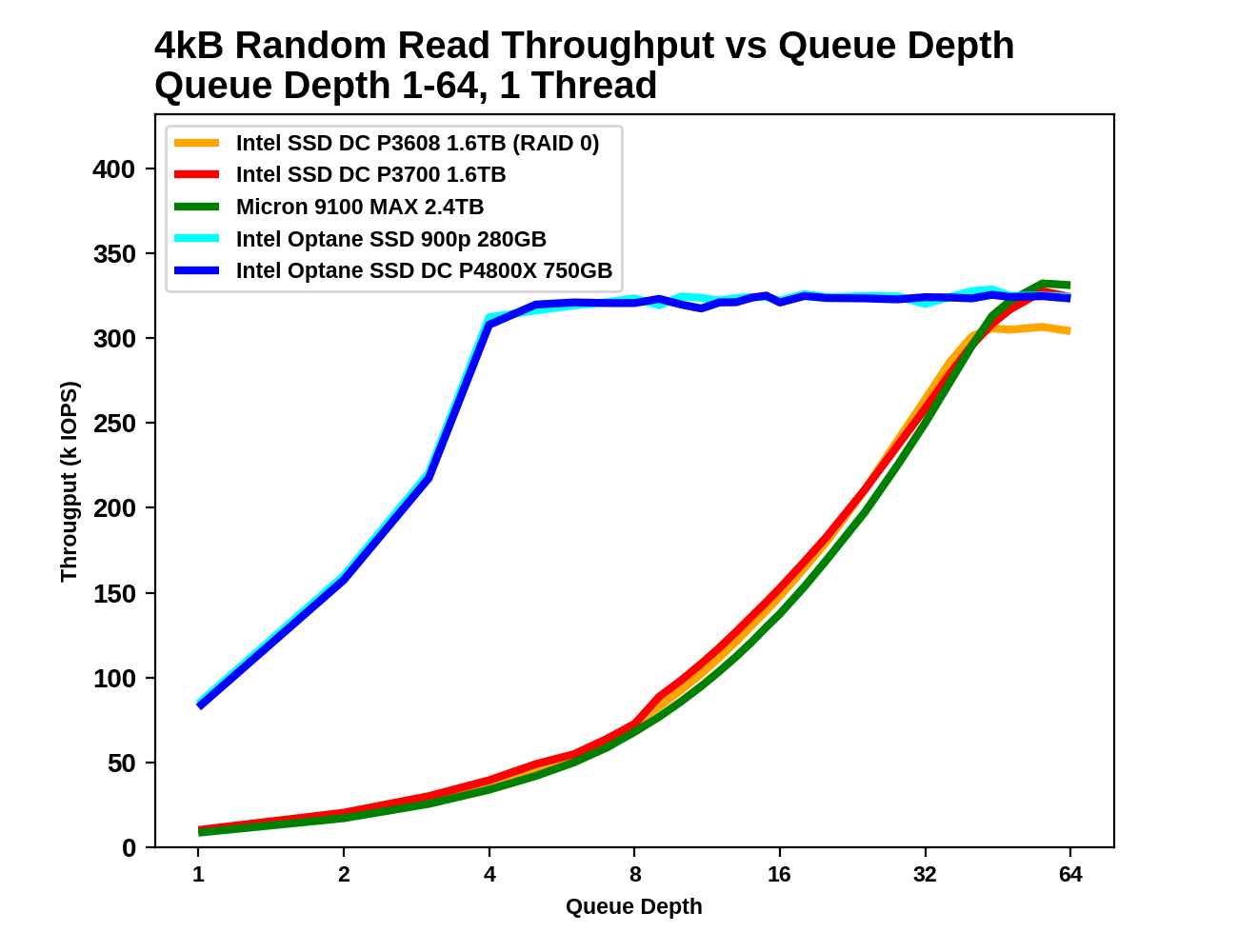 |
|||||||||
| Throughput: | IOPS | MB/s | |||||||
| Latency: | Mean | Median | 99th Percentile | 99.999th Percentile | |||||
For the Optane SSDs, the queue depth only needs to reach 4-6 in order to be near the highest attainable random read performance, and further increases in queue depth only add to the latency without improving throughput. The flash-based SSDs require queue depths well in excess of 32. Even long after the Optane SSDs have reached saturation an latency has begun to climb, the Optane SSDs continue to offer better QoS than the flash SSDs.
4kB Random Writes
The Optane SSDs offer the best single-threaded random write performance, but the margins are much smaller than for random reads, thanks to the write caches on the flash-based SSDs. The flash SSDs have random write latencies that are only 2-3x higher than the Optane SSD's latency, and the throughput advantage of the Optane SSD at saturation is less than 20%.
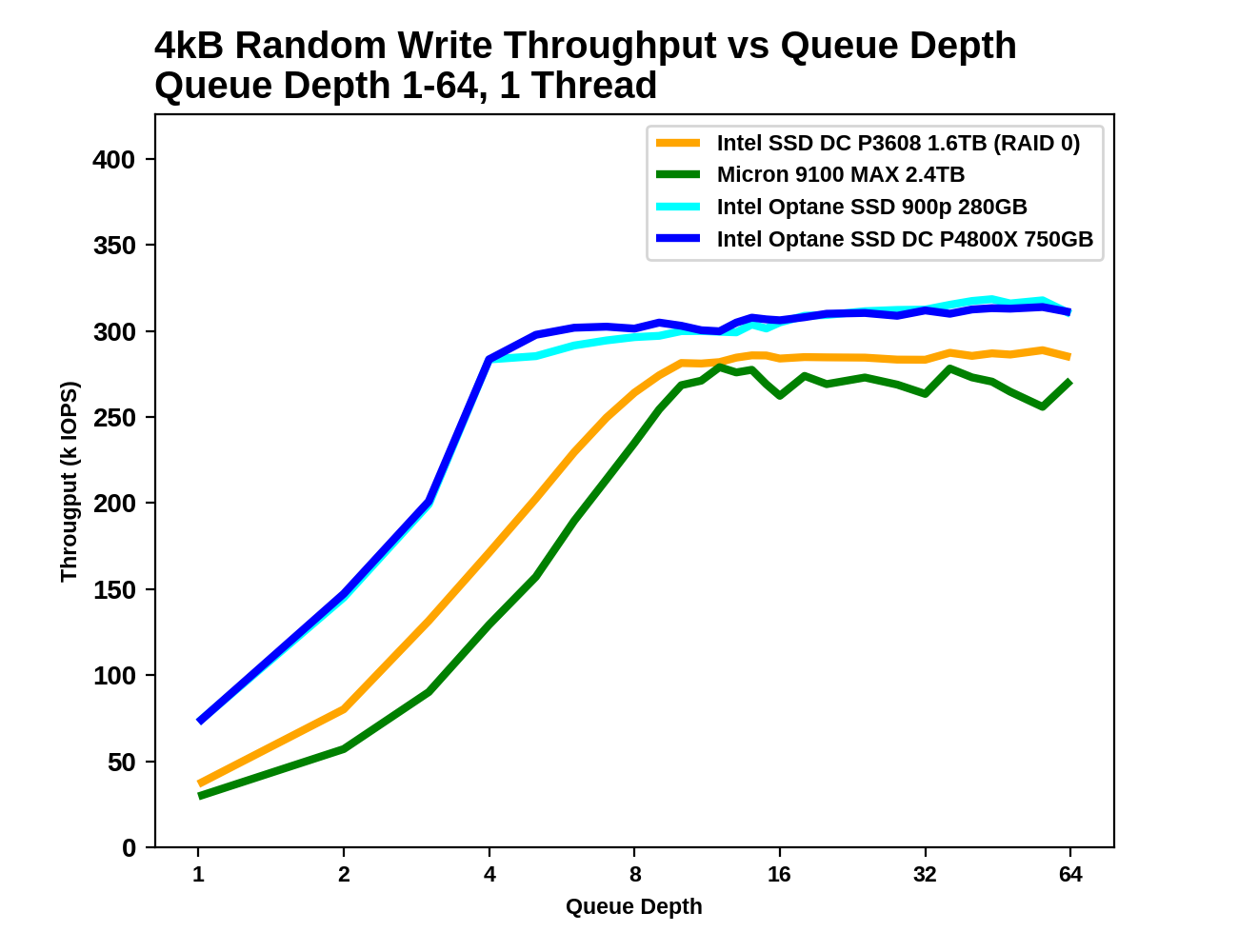 |
|||||||||
| Throughput: | IOPS | MB/s | |||||||
| Latency: | Mean | Median | 99th Percentile | 99.999th Percentile | |||||
The Optane SSDs saturate around QD4 where the CPU becomes the bottleneck, and the flash based SSDs follow suit between QD8 and QD16. Once all the drives are saturated at about the same throughput, the Optane SSDs offer far more consistent performance.
128kB Sequential Reads
With the large 128kB block size, the sequential read test doesn't hit a CPU/IOPS bottleneck like the random read test above. The Optane SSDs saturate at the rated throughput of about 2.4-2.5GB/s while the Micron 9100 MAX and the Intel P3608 scale to higher throughput.
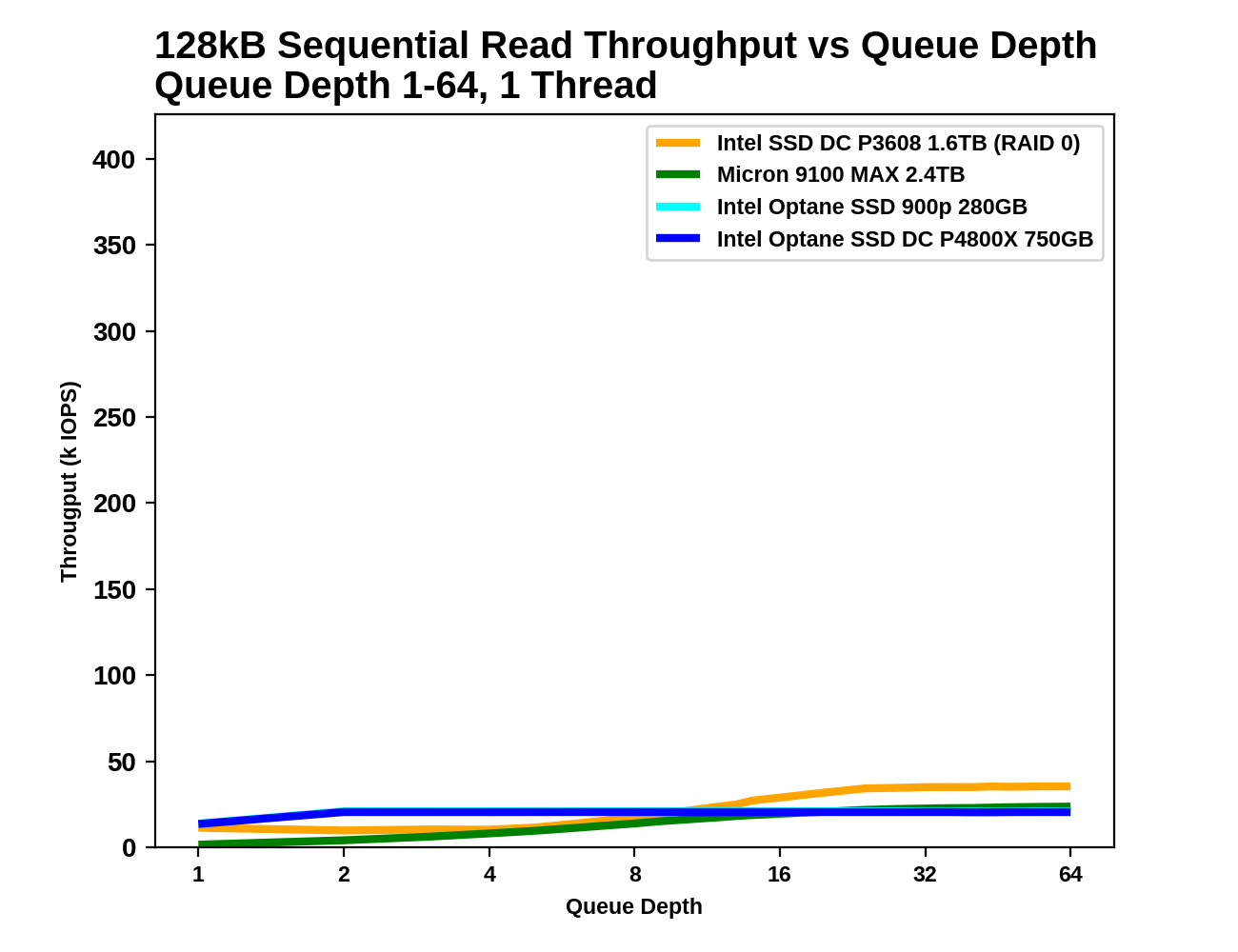 |
|||||||||
| Throughput: | IOPS | MB/s | |||||||
| Latency: | Mean | Median | 99th Percentile | 99.999th Percentile | |||||
The Optane SSDs reach their full sequential read speed at QD2, and the flash-based SSDs don't catch up until well after QD8. The 99th and 99.999th percentile latencies of the Optane SSDs are more than an order of magnitude lower when the drives are operating at their respective saturation points.
128kB Sequential Writes
Write caches again allow the flash-based SSDs to approach the write latency of the Optane SSDs, albeit at lower throughput. The Optane SSDs quickly exceed their specified 2GB/s sequential write throughput while the flash-based SSDs have to sacrifice low latency in order to reach high throughput.
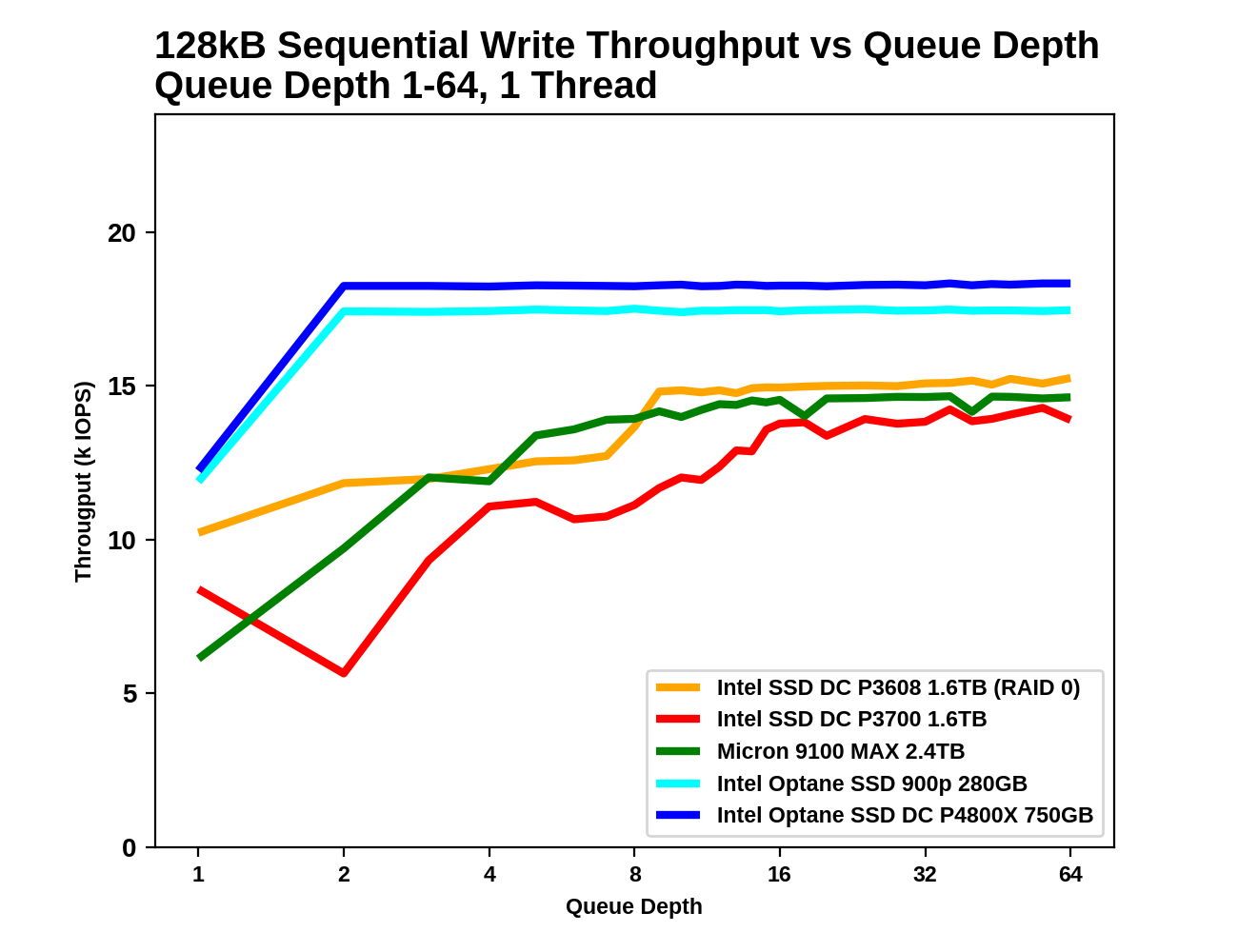 |
|||||||||
| Throughput: | IOPS | MB/s | |||||||
| Latency: | Mean | Median | 99th Percentile | 99.999th Percentile | |||||
As with sequential reads, the Optane SSDs reach saturation at a mere QD2, while the flash-based SSDs need until around QD8 to scale up to full throughput. By the time the flash-based SSDs reach their maximum speed, their latency has at least doubled.


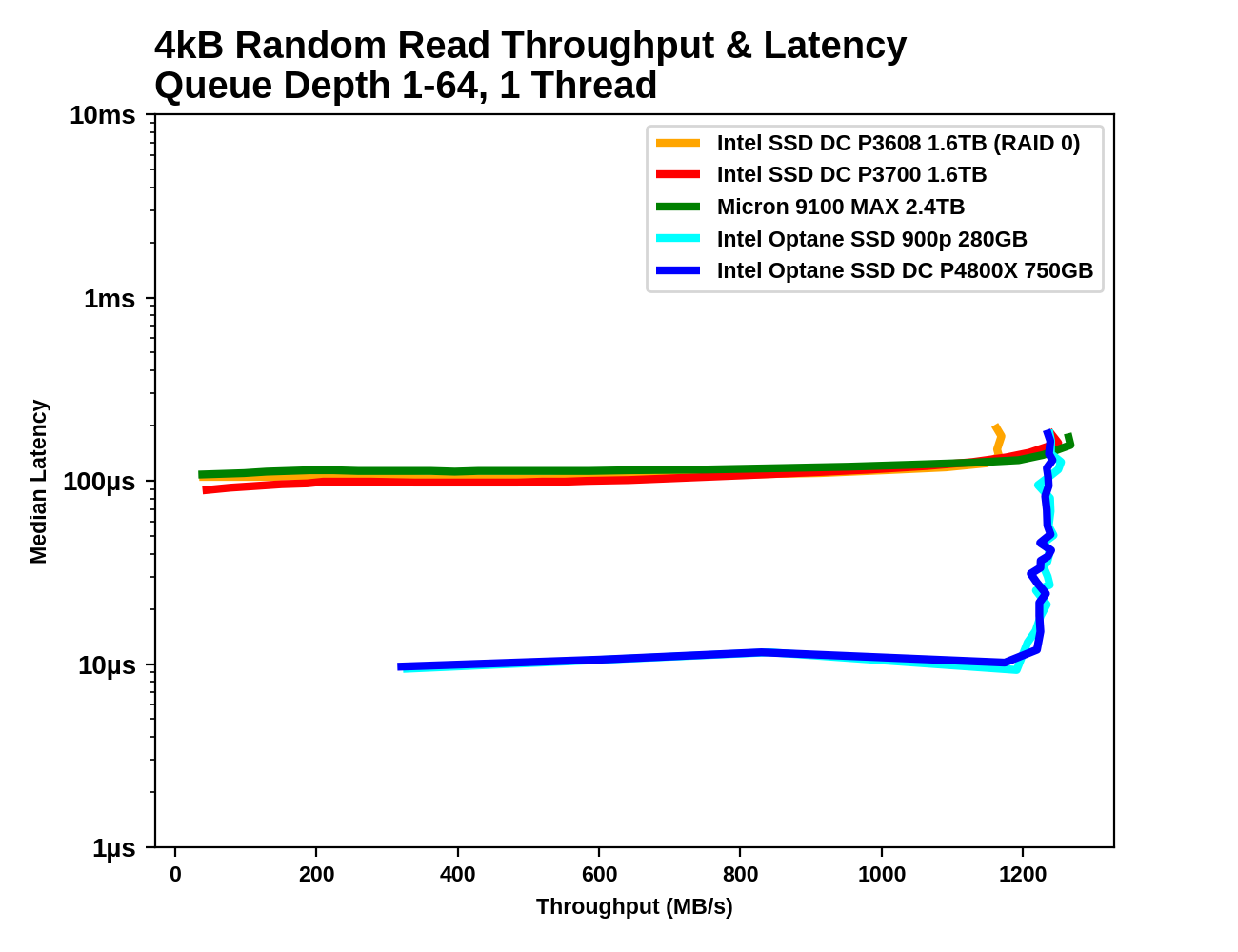
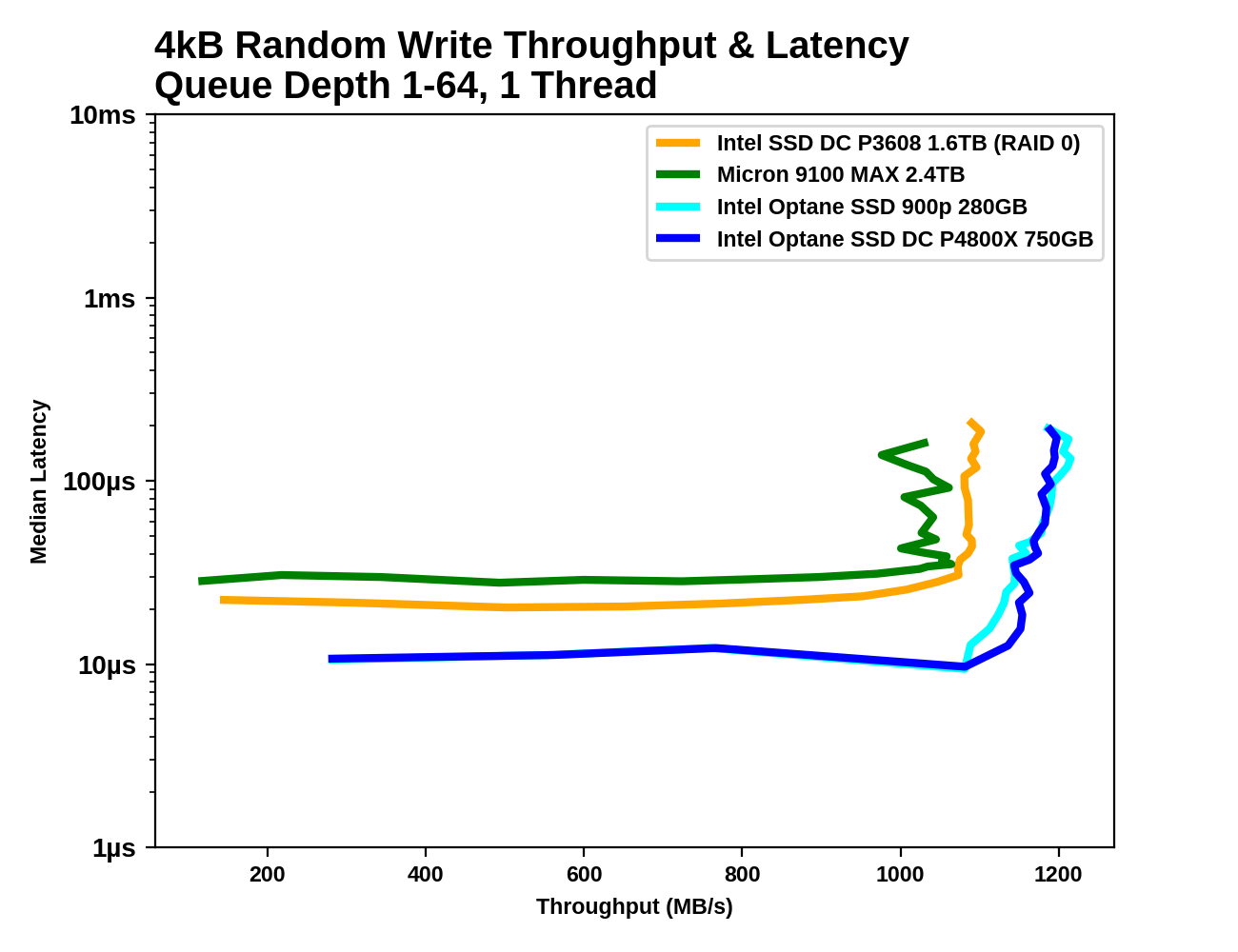

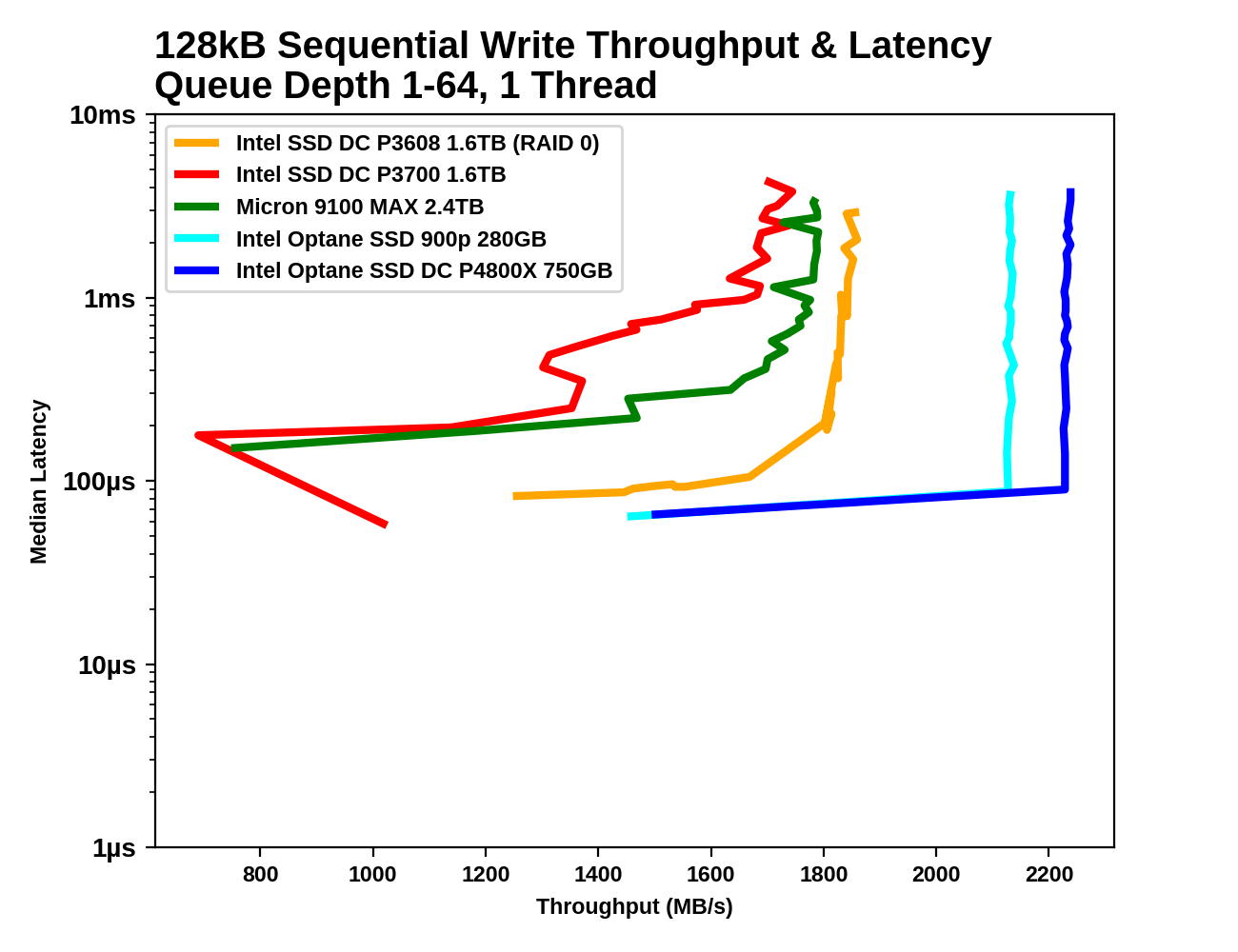








58 Comments
View All Comments
woggs - Thursday, November 9, 2017 - link
This drive is PCIe 3, so nothing will change because it will link as gen 3. Will need a whole new drive...MajGenRelativity - Thursday, November 9, 2017 - link
I believe OP was talking about a drive that was identical to this in every way, but supporting PCIe 4woggs - Thursday, November 9, 2017 - link
And SSD is a system and would neither over nor under engineer any one piece significantly. So, altering one piece should not be expected to suddenly pop to some much higher performance. Will require a whole new drive.Hurr Durr - Thursday, November 9, 2017 - link
Where is requisite ddriver hysterics session about hypetane?Reflex - Thursday, November 9, 2017 - link
It appears the hysteric is gone at least for the time being. As a result the discussion has been far easier to read.Great drive, can't wait to see future generations where presumably they will increase density and reduce power consumption...
woggs - Thursday, November 9, 2017 - link
Yep!woggs - Thursday, November 9, 2017 - link
(on both counts)Hixbot - Thursday, November 9, 2017 - link
He must be taking the day off. I'm sure he'll flood the comments tomorrow.Makaveli - Thursday, November 9, 2017 - link
If you say his name 3 times he will show up....DON'T DO IT!
abhaxus - Thursday, November 9, 2017 - link
I came here looking for him, and was disappointed.